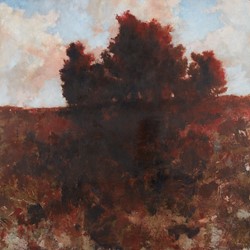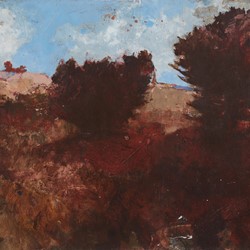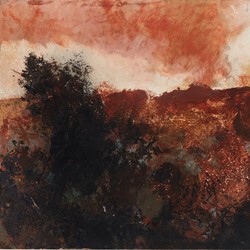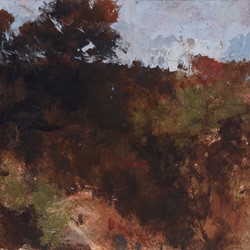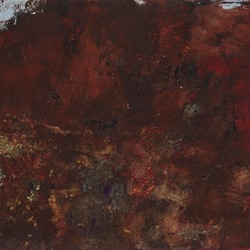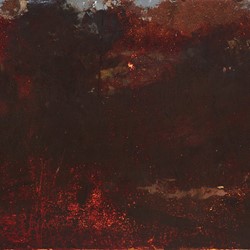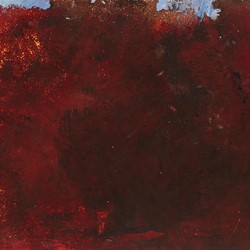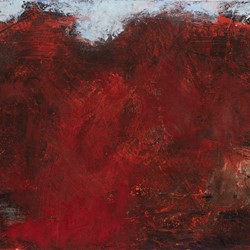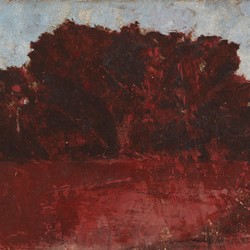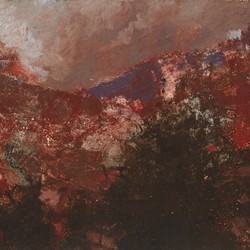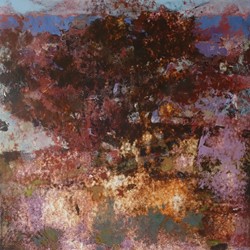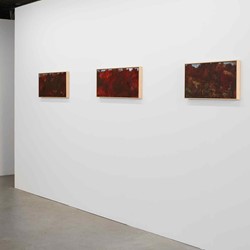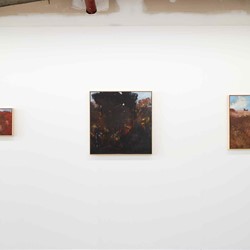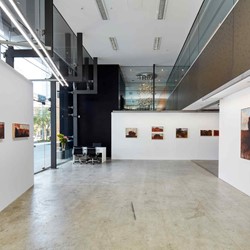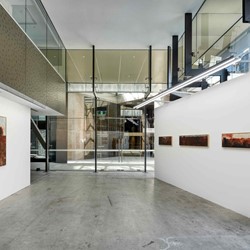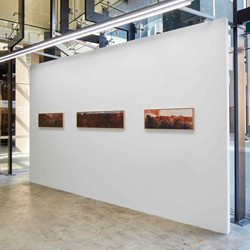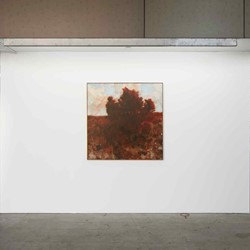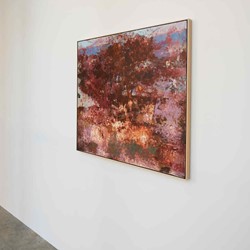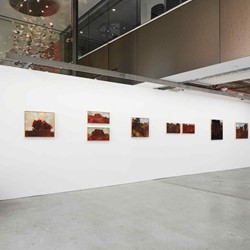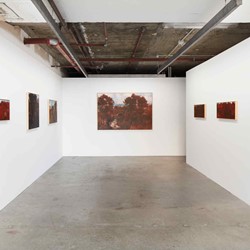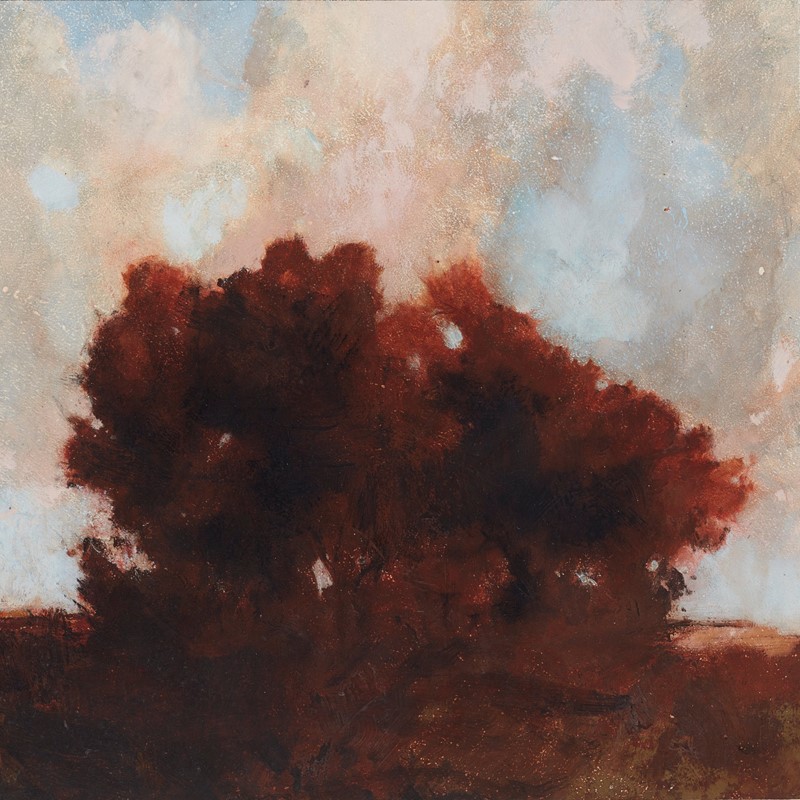
Recent paintings by Merrick Belyea reflect on environmental concerns and mankind’s curious appetite for destruction. Paring back the veneer of previously prepared paint layers reveals the detritus of process and the fragility of surface. The resultant muted tones uncover a fading memory of Arcadia and the abandonment of utopian ideals.
"Trajectories of light spin through a gauze of foliage. Silhouetted trees precipitously edge against singular grey-blue skies. Tiers of shadowy undergrowth move and spill, signalling inscrutable biological activity.
Merrick Belyea’s recent paintings document pockets of remnant bushland at the fringes of Perth’s suburbs. An exploration of the juncture of land and sky; unifying colours – tan, yellow; and a repeat symbology of motifs link these disparate landscapes.
Using oil on board, sections are by turn built-up and elongated; scores formed by indents to the surface before the application of paint. In Ashfield Flats (2018) vertical lines evoke the structures of reedy, piquant swampland. View to Woodman Point (2019) takes a tree-top vantage: a thin seam of fulgent Indian Ocean just-visible through ragged contours of leaves.
Four paintings, Near Gabbadah I, III, IV, and V (2019), explore compositional shifts in a coastal site an hour north of Perth, where suburbs thin to farmland. Works depict stands of Eucalypts and vegetation crowding against a high horizon; before moving to a sparse agrarian view, of lone trees and a broad sky.
Belyea’s appraisal draws sharp attention to temporality – to landscape marked by its point in time. The title of the exhibition references a Latin phrase used since the 17th Century within artistic representation, to express a hankering for a utopia coupled with a recognition of a flawed human existence rendering the pursuit futile.
The works exist as a form of reckoning, both with the past – the colonial, agronomic razing of the environment; and with the future – as precariously defined by our destructive epoch. As fragments of erstwhile landscape, the sites point to our implication in this loss.
Beyond the potent political and psychic symbolism of the paintings, however, is a simple meditation upon the visceral present: Belyea’s sensitive reading of the colour, light and atmosphere of landscape an attentive recognition of the vestige that persists, today, in spite of us."
Nyanda Smith for The Review Board, September 2020



